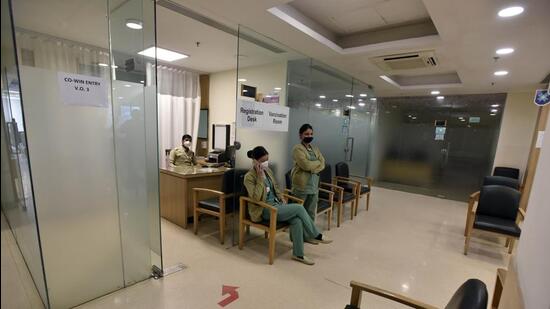Understanding the feasibility, impact of standardising rates across private hospitals
A senior executive from a chain of eye hospitals warned that “ while cheap treatment may sound tempting, cutting costs so drastically will dilute the quality of care in the long run.”
The Association of Healthcare Providers India (AHPI), on behalf of the industry, on Friday intervened in the Supreme Court asking permission to participate in the next hearing of a case where, in the last hearing, the court asked the Union government to propose, within six weeks, ways to effect a rule under a 2010 law that requires the state to notify medical tariffs in private hospitals.

On February 27, at the last hearing, the bench, comprising justices BR Gavai and Sandeep Mehta, said that if the Union government does not do this, the court would direct that CGHS (central government health scheme) rates be applied for procedures across the board till the central government fixed rates.
Consumer groups have welcomed the court’s move. “The intention of the court is noble, no doubt, as it will surely benefit patients at large. However, the implementation needs to be seen as it’s going to be no less than a Herculean task,” said advocate Ashok Aggarwal, who runs an NGO, Social Jurist, to oversee cases for the poor and needy in the health care and education sector.
But private hospitals are calling it a “disastrous step that will compromise overall quality of health care”.
Meanwhile, insurance companies also welcomed the move. “Insurance companies have always felt the need for standardisation of costs as there is usually a significant gap in what is charged and those who are covered under some insurance. Bills are being inflated even though no hospital would admit it,” said an executive of a prominent insurance company, requesting anonymity.
“We have intervened that whenever the next hearing will be, we are also made a part of it because the next hearing will be crucial in knowing which direction this matter takes. It will be more scientific when the Centre submits its response as asked,” said Dr Girdhar Gyani, director-general, AHPI.
“We are not against standardisation of rates, to be honest, but the key question is on what basis will the rates be standardised? Costing has several variables that could be impacted by something as basic as geographical location of a hospital – for example, running a hospital in Delhi will be more expensive than say running a hospital in Haryana or UP. Comparing rates with procedures taking place at government hospitals does not make sense simply because in public hospitals, the government largely foots the treatment cost. The actual cost of treatment may be much higher but the patient – because of subsidised treatment cost – only gets to shell out a fraction of it, which is not a case in private hospitals,” Gyani added.
To be sure, if India sets a range for the tariffs, it will not be the first country in the world to do so. Japan, for instance, does, and the country is considered to have one of the best healthcare systems in the world. But Japan also has universal health insurance.
“People who say it is not feasible are overthinking. Having worked in the public sector and closely within the health ministry, I can vouch that it is not impossible. There are close to 400 specialities only and if you remove the consultation charges of doctors/surgeons, everything else to conduct a procedure is largely the same. At least, a step has been taken and it is in the right direction,” said Arun Jha, former economic advisor, Union health ministry.
A senior executive from a chain of eye hospitals warned that “ while cheap treatment may sound tempting, cutting costs so drastically will dilute the quality of care in the long run.”
Gyani added: “As for applying CGHS rates that is another issue as CGHS rates have not been properly revised in almost a decade .”
The association in this regard also wrote to the Union health secretary, Apurva Chandra, on Friday. “The main issue vide clause (ii) is about fixing of rates. To best of our knowledge, there has not been any scientific study on costing of procedures. There was one such initiative by MOHFW in year 2014… but it could not be completed… Talking about CGHS rates, even these rates are not arrived based on any scientific study. Further these rates were fixed in year 2014 and have not been revised since. As regards to the disparity between rates in government and private hospitals, it is to be appreciated that rates in government hospitals are heavily subsidised. If we carry out study on costing in government hospitals taking fixed and variable costs, these will not differ much with rates charged in private hospitals,” it said.
The furore follows a hearing into a PIL concerning The Clinical Establishments (Registration and Regulation) Act, 2010, and the Clinical Establishment (Central Government) Rules, 2012. This is not the first time the Court has taken exception to Centre dragging its feet on the matter. In November 2022, the top court passed an order directing the Centre to proceed fixing the rates under the 2010 Act and 2012 Rules.
The 2010 Act governs all clinical establishments and hospitals across the country. Rule 9 fixes certain duties on clinical establishments, namely that “Every clinical establishment shall display the rates charged for each type of service provided and facilities available, for the benefit of the patients at a conspicuous place in the local as well as in English language.”
Further, the Rule states, “The clinical establishments shall charge the rates for each type of procedures and services within the range of rates determined and issued by the Central Government from time to time, in consultation with the State Governments.”






